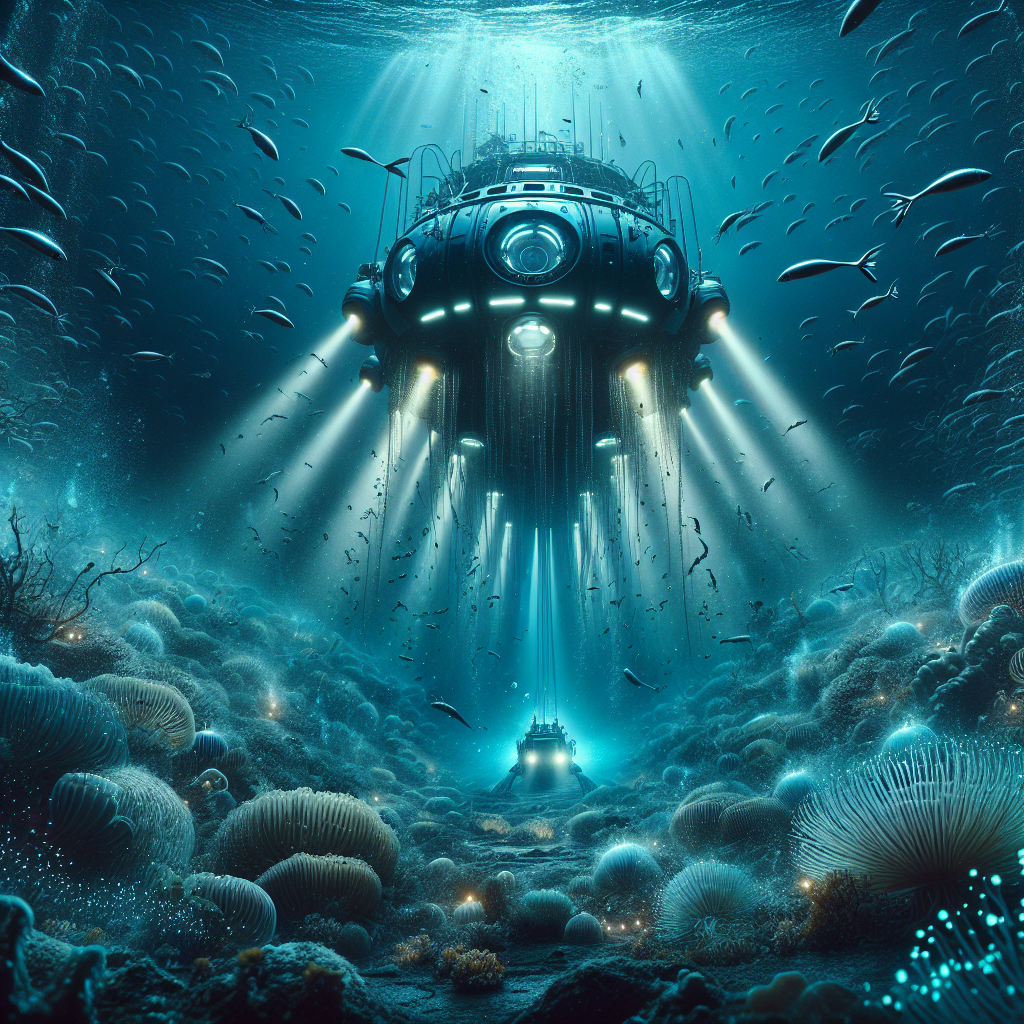An Enigmatic World Beneath Our Oceans
Begin your journey beneath the surface of the ocean and be prepared for a fascinating insight into entities and mysteries that would astound even the most jaded of explorers. The deep sea, otherwise known as the abyss, is arguably the least understood region of our planet.
The Abyss: A World Shrouded in Darkness and Silence
At 1000 metres below sea level, the world becomes silent, black, and is subjected to bone-crushing pressures. It is here that creatures have to adapt to survive, resulting in a surreal menagerie of life forms that defy our imagination. This is the world of the abyss.
Surprising Discoveries in the Abyss
Without the drastic environmental conditions in the abyss, some of the strangest creatures would not have been discovered. They challenge our understanding of what life is capable of.
The Vampire Squid
Despite its horrifying name, the vampire squid is a small cephalopod. It weighs up to 13 pounds and can live in areas with almost no oxygen. It’s known for its large eyes and ability to emit flashes of light from its body, giving it an eerie glow in the inky blackness.
Extremophile Bacteria
Moving from multicellular organisms to unicellular ones, extremophile bacteria in the abyss demonstrate a capacity for life that goes beyond the norm. These microorganisms thrive in extremely high pressures, temperatures varying from freezing cold to scorching hot, and complete darkness. They contribute significantly to the earth’s biomass and play pivotal roles in maintaining our planet’s health.
Hydrothermal Vents and Black Smokers
Beyond living organisms, the shocking discoveries in the deep sea extend to geological phenomena. Hydrothermal vents, also known as black smokers, are underwater geysers that emit mineral-rich water. They create unique ecosystems where life thrives in the absence of sunlight.
Technological Advances Pushing Deep Sea Exploration
Our journey into the abyss has been made possible by impressive technological achievements. Submersibles and remotely operated vehicles (ROVs) have captured stunning images and collected priceless samples from the deep sea’s inhospitable environment.
Alvin Submersible
One of the pioneers in deep-sea exploration, the Alvin Submersible, made a name for itself after locating a lost hydrogen bomb in the Mediterranean Sea during 1966. Since then, it has conducted over 4000 dives, exploring the deep sea like no other vessel.
Remote Operated Vehicles (ROVs)
ROVs, being unmanned, can be operated from the safety of a mother ship. They have made the deep sea more accessible, contributing to our understanding of the abyss. With ongoing innovation in ROV technology, our knowledge of the deep sea is continually expanding.
Safeguarding the Unknown: The Fragility of the Deep Sea
Despite its harsh conditions, the abyss is a fragile ecosystem. Human activities such as deep-sea mining and overfishing threaten its integrity.
Long-Term Impacts of Deep Sea Mining
With resources on land dwindling, the deep sea has been eyed as the next frontier. Yet, experts warn that the disruption caused by mining may have irreversible impacts on the delicate deep-sea ecosystems.
The Dangers of Overfishing
Deep-sea species reproduce slowly, making them vulnerable to overfishing. Fishing fleets venturing deeper into the ocean put these species at risk, possibly leading to ecosystem collapse if left unchecked.
Into the Abyss and Beyond
Our foray into the abyss has only just begun. Each discovery reveals not only the resilience of life but also the fragility of ecosystems that need our protection. As we dive deeper, we continue to realize how integral our oceans are to life on Earth.
